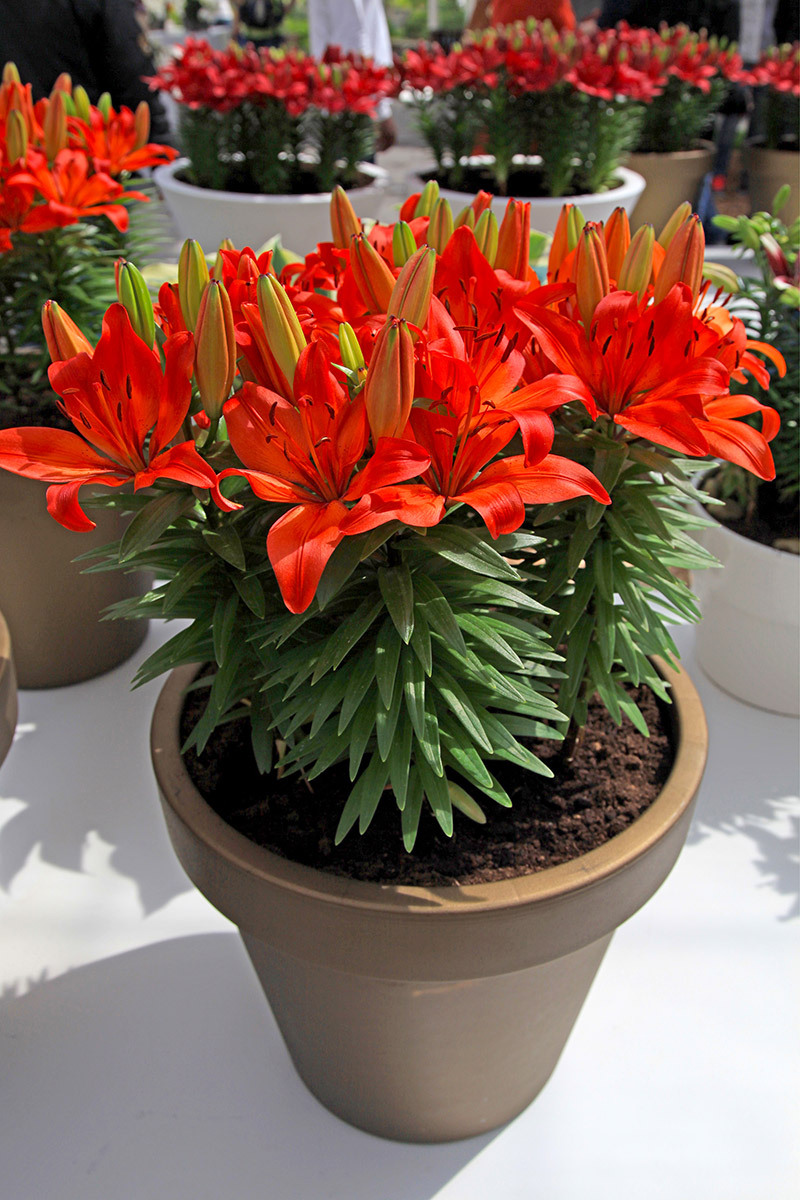Unlock the Beauty of Hydrangeas with Proper Care
Posted on 14/08/2025
Unlock the Beauty of Hydrangeas with Proper Care
Hydrangeas are beloved by gardeners and flower enthusiasts alike for their lush foliage and stunning, voluminous blooms. These versatile shrubs can uplift any landscape with their vibrant colors and enchanting appeal. However, achieving flawless hydrangea blossoms year after year requires thorough knowledge and diligent care. In this comprehensive guide, we will explore everything you need to know to unlock the full beauty of hydrangeas with proper care, ensuring your garden becomes a sanctuary for these gorgeous blooms.
Understanding Hydrangeas: Types and Unique Qualities
Before delving into the specifics of hydrangea care, it's essential to understand the different types available. Hydrangeas come in several varieties, each offering distinct characteristics, colors, and growth requirements.
Main Hydrangea Varieties
- Bigleaf Hydrangea (Hydrangea macrophylla): Known for their large, round flower clusters that come in stunning blues, pinks, and purples.
- Panicle Hydrangea (Hydrangea paniculata): Features elongated panicle-shaped blooms, usually white or green, transitioning to pink as the season progresses.
- Oakleaf Hydrangea (Hydrangea quercifolia): Recognized by their deeply lobed leaves and cone-shaped flowers, often creamy white turning pink with age.
- Smooth Hydrangea (Hydrangea arborescens): Native to North America; displays fluffy, ball-shaped flower heads in white or pale pink.
- Climbing Hydrangea (Hydrangea petiolaris): A unique species that climbs walls, fences, and trees, adorned with lacy, white flower clusters.
Identifying the variety you are growing is the first step towards unlocking the splendor of hydrangeas with precise care.

Choosing the Right Location and Soil
Hydrangeas thrive when planted in optimal conditions. With the correct site and soil, you set the foundation for robust health and breathtaking blossoms year after year.
Ideal Light Conditions
- Most hydrangea varieties prefer morning sun and afternoon shade.
- Bigleaf and oakleaf hydrangeas do best in dappled or filtered sunlight to prevent leaf scorch.
- Panicle hydrangeas can tolerate more direct sunlight.
- Too much shade may reduce flowering; too much sun may wilt and stress the plants.
Soil Requirements
- Hydrangeas flourish in well-draining, fertile soil rich with organic matter.
- The soil pH can directly influence the color of Bigleaf hydrangea blooms, producing blue flowers in acidic soils and pink in alkaline soils.
- Incorporate compost or aged manure to enhance fertility and moisture retention.
- Maintain even soil moisture to prevent root stress and promote healthy growth.
Pro Tip: If your garden soil is heavy clay or poorly draining, consider amending it with coarse sand, compost, and peat moss, or grow hydrangeas in raised beds for improved drainage.
Mastering Hydrangea Planting Techniques
When to Plant Hydrangeas
- Plant your hydrangeas in spring or early fall when temperatures are milder.
- This allows roots to establish before harsh weather.
- Transplant container-grown specimens at any time, but be prepared to provide extra care during hot periods.
How to Plant Hydrangeas
- Dig a hole twice as wide and just as deep as the root ball.
- Gently remove the plant, loosen the roots if compacted, and place in the hole with the top of the root ball level with the soil surface.
- Backfill with enriched soil, water thoroughly, and apply mulch to retain moisture and suppress weeds.
- Space plants according to their variety. Some hydrangeas need up to 6 feet apart for good air circulation and healthy growth.
Watering Hydrangeas: Tips for Moisture and Health
Proper watering is crucial to maintaining hydrangea vitality and flower production.
- Hydrangeas need consistently moist soil, especially during hot or dry spells.
- Deep soakings are preferable to light, frequent waterings. Aim for at least 1 inch per week, more during extreme heat.
- Mulch with organic materials such as shredded bark, pine needles, or compost to conserve moisture and regulate soil temperature.
- Water at the base of the plant to avoid wetting the foliage, which can lead to disease.
- Container-grown hydrangeas may require daily watering, especially in summer.
Warning: Do not allow the soil to become waterlogged, as hydrangea roots are sensitive to rot. Ensure your planting site has adequate drainage.
Fertilizing Hydrangeas for Exuberant Blooms
To unlock the full beauty of hydrangeas, it's important to provide nutritional support during the growing season.
Best Fertilizers for Hydrangeas
- Apply a slow-release, balanced fertilizer (such as 10-10-10) in early spring.
- Supplement with a high-phosphorus formula to encourage bloom set.
- Organic amendments like well-rotted compost or worm castings promote beneficial soil life and sustained nourishment.
- Liquid seaweed or fish emulsion can be used for a mid-season boost.
Fertilizing Schedule
- Feed once in early spring, then again in early summer if plants appear lackluster.
- Do not fertilize late in the season, as this can stimulate new growth susceptible to winter damage.
Pruning Hydrangeas: Enhancing Flower Production and Shape
Proper pruning is key to unlocking your hydrangeas' full beauty, ensuring abundant blooms and healthy structure. However, hydrangea pruning can be confusing as different types have different pruning requirements.
When and How to Prune Hydrangeas
- Bigleaf Hydrangea: Prune just after flowering, as these bloom on old wood (previous year's growth).
- Panicle and Smooth Hydrangeas: Prune in late winter or early spring, as they flower on new wood.
- Oakleaf Hydrangea: Minimal pruning required, remove dead wood after flowering if needed.
- Climbing Hydrangeas: Trim lightly to control size and remove damaged stems.
Note: Over-pruning or severe cutting can remove flower buds, resulting in a flowerless season. Always research your hydrangea type before proceeding!
Changing Hydrangea Colors: The Science Behind the Blooms
One of the greatest wonders of hydrangeas--particularly bigleaf hydrangea--is the plant's ability to change flower color based on soil pH. With a little effort, you can unlock a spectrum of hydrangea colors in your garden.
- Acidic soil (pH below 6): Blooms turn blue.
- Neutral to alkaline soil (pH above 7): Blooms shift to pink or red.
- White and green hydrangea flowers do not change color depending on pH.
How to Alter Hydrangea Flower Color
- To encourage blue blooms: Add aluminum sulfate to the soil and mulch with pine needles or peat moss.
- For pink shades: Add garden lime regularly and avoid aluminum in the soil.
- Test your soil's pH before making adjustments and use recommended doses to avoid plant stress.
Protecting Hydrangeas: Common Problems and Solutions
Proper hydrangea maintenance involves protecting your plants from pests, diseases, and environmental stressors.
Common Hydrangea Pests
- Aphids: Remove with a strong jet of water or treat with insecticidal soap.
- Spider Mites: Rinse the foliage and improve humidity; use neem oil if infestation persists.
- Scale Insects: Manually remove or apply horticultural oil.
- Slugs/Snails: Use diatomaceous earth or slug traps to keep them at bay.
Hydrangea Diseases and Prevention
- Powdery mildew: Ensure good air circulation and avoid overhead watering.
- Leaf spots: Remove infected leaves and maintain cleanliness around the plant base.
- Root rot: Plant in well-drained soil and water appropriately.
Environmental Stress and How to Manage
- Mulch well to buffer temperature fluctuations and retain soil moisture.
- Provide partial shade during extreme heat to prevent wilting and leaf scorch.
- Stake tall varieties if strong winds are common in your area.
Winter Care for Hydrangeas: Preparing for the Cold
Some hydrangea varieties need extra protection during winter, especially in regions with freezing temperatures.
- Mulch heavily around the root zone before the first frost--2 to 3 inches of chopped leaves or straw works well.
- Cover young or vulnerable plants with burlap or frost cloth.
- Container-grown hydrangeas can be moved to an unheated garage or protected corner.
- Refrain from pruning late in the season, as this can stimulate tender new growth susceptible to frost damage.
Hydrangea Landscaping Ideas: Unlocking Garden Beauty
Hydrangeas offer remarkable versatility in the landscape. Their dramatic blooms and lush leaves serve multiple garden roles:
- Foundation Plantings: Plant hydrangeas along the house perimeter for structure and color.
- Mixed Borders: Combine with roses, ferns, hostas, and spring bulbs for layered, season-long interest.
- Hedges and Privacy Screens: Use large varieties like panicle hydrangeas for natural fencing.
- Container Gardens: Hydrangeas can thrive in spacious pots--perfect for patios and balconies.
- Accent Plants: Place a specimen hydrangea in a focal area to draw eyes and admiration.

Frequently Asked Questions About Hydrangea Care
How often should I water my hydrangeas?
Ensure the soil remains consistently moist, especially during growing and blooming seasons. Established plants usually need about one inch of water per week. Overly dry or wet conditions can cause wilt or root rot, respectively.
Why are my hydrangeas not blooming?
Lack of blooms can result from pruning at the wrong time, winter damage to flower buds, or insufficient sunlight. Ensure you know your hydrangea type's specific care needs.
Is it difficult to change hydrangea colors?
Changing hydrangea flower color is possible with pH adjustments to the soil, but patience is required. Changes may take a season or more to become noticeable and are limited to certain hydrangea types.
When is the best time to prune hydrangeas?
Timing varies with type: Prune bigleaf and oakleaf just after blooming; prune panicle and smooth varieties before new growth begins in late winter or early spring.
Conclusion: Revel in the Beauty of Well-Cared-For Hydrangeas
With attentive hydrangea care, you can unlock the dazzling beauty these iconic shrubs bring to home gardens. By choosing the right location, providing balanced nutrition, maintaining proper moisture, and respecting pruning schedules, you ensure lush foliage and vibrant blooms year after year. Don't forget to experiment with flower color changes through soil adjustments and protect your plants against pests and harsh weather. With these comprehensive tips, your hydrangeas will truly become the crown jewels of your landscape, enchanting visitors and delighting your senses each season.
Unlock the beauty of hydrangeas with proper care--and enjoy a flourishing garden that bursts with color and grace for years to come.





